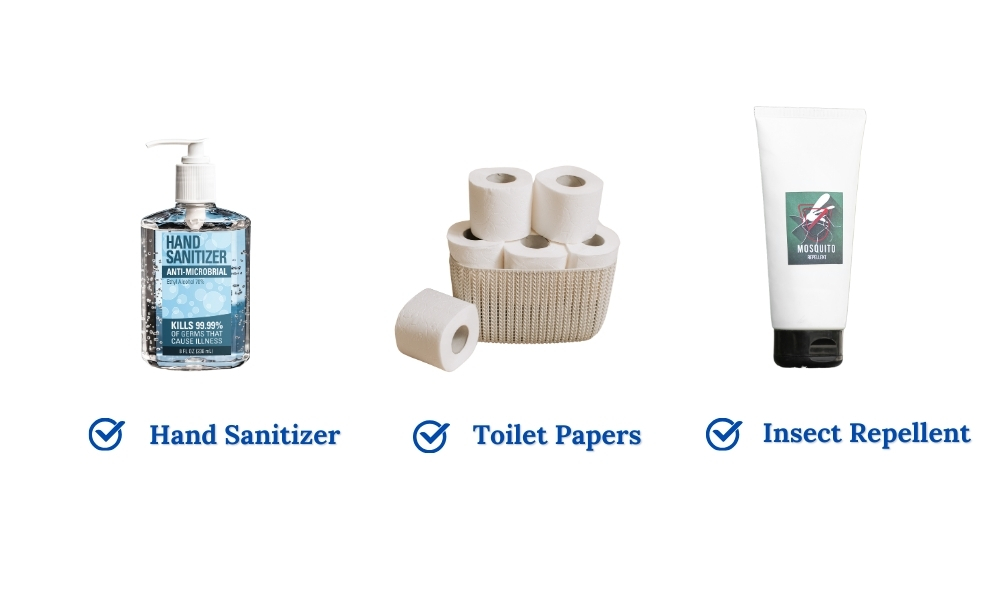Trekking in Nepal is more than just a physical adventure; it’s a transformative experience that connects you with breathtaking landscapes, diverse cultures, and your inner self. Packing for this journey requires more than just assembling gear—it’s about preparing thoughtfully to ensure comfort, sustainability, and respect for the environment and local communities. here’s a complete take on what to pack and why it matters.
Day Bag Packing (20–40 liters)
Your day bag is your lifeline during the trek, holding items you’ll need immediate access to. It must be lightweight, organized, and easy to carry.
Base Layer (Bottom of the Day Bag)
- Fleece: Provides warmth during sudden temperature drops. Essential for high altitudes where weather changes rapidly.
- Waterproof Jacket and Trousers: Protects against rain, snow, and wind. Staying dry is critical to avoid hypothermia and maintain comfort.
Trekking in Nepal often involves traversing diverse climates in a single day. Quick access to extra layers ensures you can adapt without delay.
.jpg)
Middle Layer (Main Compartment)
- Water Bottle/Bladder: Staying hydrated is vital to prevent altitude sickness and fatigue. A water bladder allows hands-free hydration.
- Snacks and Specialist Food: Energy bars and trail mix provide quick energy boosts during long treks.
- Trekking Poles: Helps reduce strain on knees and improves stability on uneven terrain. Collapsible poles fit neatly inside or outside your day bag.
- First Aid Kit: Immediate access to bandages, pain relievers, and altitude sickness medication can be life-saving in emergencies.
- Headtorch: Essential for visibility during early starts or unexpected delays, ensuring safety on dark trails.
These items keep you energized, safe, and prepared for unforeseen challenges on the trail.
.jpg)
Top Layer (Quick-Access Items)
- Sunglasses: Protects eyes from intense UV rays at high altitudes.
- Sunscreen: Prevents sunburn, which is more severe at higher elevations.
- Hat and Gloves: Shields against cold winds and sun exposure.
- Buff/Neck Gaiter: Versatile protection for your neck and face from dust, wind, and sun.
Quick access to protective gear helps you adapt to the environment without slowing down.
.jpg)
Side Pockets or Hip Belt Pockets
- Hand Sanitizer and Toilet Paper: Hygiene is critical in remote areas where facilities are limited.
- Insect Repellent: Protects against bites, especially in lower altitudes.
These items address immediate needs for hygiene and protection from environmental factors.

How to Pack Your Day Bag for Trekking
The day bag is your essential companion on the trail, holding items you'll need immediate access to throughout the day. Start by placing extra layers, like a lightweight fleece or windbreaker, at the bottom of the bag, as these are not frequently needed but crucial for sudden weather changes. In the middle section, store your hydration system—either a water bladder in its designated sleeve or a reusable water bottle. Alongside, keep high-energy snacks, a compact first aid kit, and any electronics, such as a power bank or camera, securely stored.
The top compartment is reserved for quick-access items like sunscreen, a hat, gloves, or a buff to protect against the elements. Use the external side pockets for trekking poles, if collapsible, and an additional water bottle for convenience. Small items like lip balm, tissues, or a pocket knife can be stashed in the hip belt pockets for easy retrieval without removing the bag. Packing cubes or small pouches are highly effective for maintaining organization and preventing clutter.
Duffle Bag Packing (60–80 liters)
Your duffle bag, carried by a porter, holds items you’ll need at the guesthouse or for emergencies. Packing strategically ensures everything is protected and accessible.
Base Layer (Bottom of the Duffle Bag)
- Sleeping Bag and Liner: Keeps you warm during cold nights, even in teahouses.
- Microspikes: Essential for icy trails, providing grip and safety.
A good night’s sleep and secure footing are non-negotiable for endurance and safety.
Middle Layer (Core Essentials)
- Trekking Clothes: Spare socks, trousers, and insulating jackets ensure you’re prepared for changing conditions.
- Guesthouse Gear: Items like a travel towel, Scrubba washbag, and biodegradable suds help maintain hygiene and comfort.
- Shoes/Sandals: Lightweight footwear for relaxing at the guesthouse.
Staying clean and comfortable after a long day boosts morale and recovery.
Top Layer (Quick-Access Items)
- Packable Bag: Handy for short walks or carrying items around the guesthouse.
- Journal and Pen: Documenting your journey helps preserve memories and track progress.
- Book or Playing Cards: Entertainment during downtime fosters relaxation and socializing.
These items enhance your experience and provide relaxation after a challenging day.
How to Pack Your Duffle Bag for Trekking
The duffle bag, typically carried by a porter, contains items you won’t need during the day but are essential for evenings and overnight stays. Start by placing bulky items like your sleeping bag and extra layers, such as a down jacket or trekking pants, at the bottom. This creates a stable base and maximizes space. The middle section should hold guesthouse essentials, including toiletries, a travel towel, and lightweight sandals, along with spare clothes like thermals and socks.
On the top layer, pack items you might need to access quickly, such as additional snacks or backup gear. Ensure even weight distribution to reduce strain on the porter, and use waterproof liners or dry bags to protect your belongings from unexpected rain. Compression straps within the duffle bag help secure the contents and prevent shifting during transport.
Items Split Between Bags
Day Bag
- Travel Documents (Passport, Permits, Insurance): Always carry these in your day bag for emergencies or checks.
- Cash: Needed for guesthouse stays, food, or unforeseen expenses.
Duffle Bag
- Backup Toiletries and Electronics: Keep items like solar panels and spare accessories in your duffle to avoid overloading your day bag.
Technology for Connection and Conservation
Electronics can enhance your trek while supporting conservation.
- Solar Chargers: Harness the abundant Himalayan sunlight to power your devices.
- Camera: Capture memories responsibly without disturbing wildlife or locals.
- Navigation Tools: Download offline maps and trekking apps to reduce reliance on paper.
Renting and Reusing Gear in Nepal
Instead of buying new gear, consider renting or purchasing second-hand items in Kathmandu. This supports the local economy and reduces your carbon footprint. Shops in Thamel and Pokhara offer a wide range of trekking gear, and many accept returns or donations of used items.
Tips for Packing Light and Smart
Packing light and smart requires a thoughtful approach to minimize bulk while ensuring you have everything you need. Start by using packing cubes or compression sacks to save space and keep your items organized. Stick to versatile clothing that can be layered, opting for quick-dry and wrinkle-resistant fabrics. Roll your clothes instead of folding to maximize space and reduce wrinkles.
Limit footwear to two pairs: one for trekking and another for casual wear. Travel-sized toiletries and dual-purpose items, like a jacket with removable layers or a sarong, are excellent choices to reduce weight. Share gear with trekking partners and invest in lightweight equipment for camping, such as ultralight sleeping bags and cookware.
To further lighten your load, minimize tech items by bringing only essential electronics and compact accessories like multi-port chargers. Wear bulkier items during transit to free up space in your pack, and leave some room for souvenirs. With careful planning, you can pack efficiently and stay prepared for your adventure.


